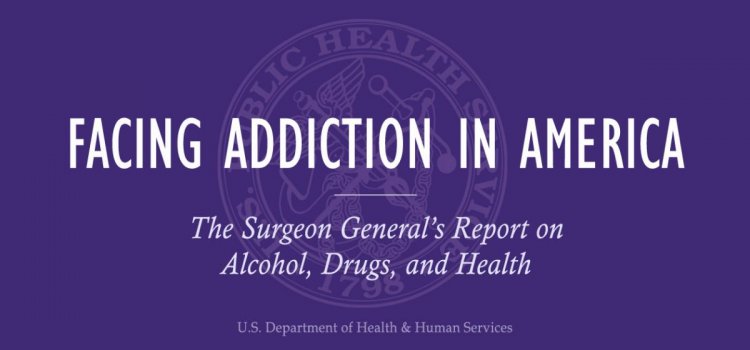Last week the Surgeon General released a historic report which called the country to action. Dr. Vivek H. Murthy made clear that the issue of addiction was one relevant to all communities, across all demographics and socioeconomic profiles. He also highlighted the lack of progress that has been made on the issue despite extensive investment and much rhetoric.
“With this report, I’m calling our country to action around one of the most underrecognized and under addressed public health issues of our time.” – Dr. Vivek H. Murthy
We welcome the Surgeon General’s Report on Alcohol, Drugs & Health; much of the findings and recommendations outlined reinforce many of the arguments and theories that have been examined by Drug Rehab Comparison in our quest to educate and raise awareness of the complexities that come with substance abuse disorders. It is reassuring that he recognizes and has comprehensively publicized that our substance misuse and addiction problem is the significant health crisis that it is. He also called on the country to reexamine their understanding, attitudes and interpretation of addiction. Highlighting the necessity to destigmatize addiction and to embrace an integrated and coordinated approach to treatment as the best solution.
Dr. Murthy went on to highlight the staggering figures associated with this national problem; 20.8 million people in the country are struggling with substance use disorders. To gain some perspective this figure is the same as the number of individuals with diabetes and nearly twice the number of people with all cancers combined. Economically the addiction epidemic has gravely damaging effects with the total cost of substance misuse and illicit drug use combined standing at an enormous $442 billion. The report outlines a practical, alternative solution to a problem that has baffled politicians, policy makers and administrations for decades. It has been well documented on this resource site that the war on drugs and associated approaches have been a failure, with rising addiction rates, an unprecedented opioid epidemic and a mass incarceration of addicts.
While this is not the first Surgeon General’s report to discuss substance use disorders, it is the first to examine extensively substance use disorders in the context of broader health issues and various other consequences. The report dedicates an entire chapter to adequately examine the neurobiology of substance abuse and addiction; reaching the conclusion that we have long argued that addition is a disease of the brain and should be treated as such. American Society of Addiction Medicine (ASAM) president Jeffrey Goldsmith, MD also supported the Surgeon General’s ideology stating “For too long, policymakers, the public, and even healthcare providers have misunderstood this disease as some sort of moral failing. We hope this report will put an end to that misperception once and for all.”
Adequate treatment requires cross sector cooperation, integrated health care and treatment approaches, with a universal understanding and unified commitment to truly tackling the disease both on an individual and national basis. A core element of his approach as a means to addressing the addiction issue is through preventative measures across various programs and policies. The report also carefully considers treatment, examining early intervention and integrated approaches. It may seem obvious but with the stigma surrounding substance abuse and the lack of empathy and compassion many do not rate it as a genuine health condition and several would dispute its categorization as a disease. Challenging these unhelpful perceptions among the public and more importantly among our health care practitioners is vital in addressing our addiction epidemic.
The process of delivery and the way in which addiction is perceived is key in restructuring our treatment options in a way that is accessible, fully utilised, with a dual diagnosis approach and adequate aftercare and recovery programs. Despite the alarming number of people suffering from substance abuse disorders only 10 percent of them receive any type of speciality treatment. Further to this 40% of those with a substance abuse disorder also have a mental health condition but just 48% of them receive treatment for either disorder. The report refers to this “treatment gap” as a critical pitfall in efforts to tackle addiction; it outlines a number of reasons for the gap, including an inability to access or afford care, fear of shame or discrimination and a lack of options with respect to screening for substance use disorders in our general health care settings. Despite the documented correlation between addiction and mental health, the care and treatment options have been provided through very distinct and separate systems. The report acknowledges changes in this trend and hopes to further increase this change in delivery.
Theoretically an integrated approach and a recognition by healthcare providers that addiction is a disease and should be treated as such seems quite simple. In practice and in reality strategic and committed steps must be taken to actually achieve this. The report suggests that eligibility for state grants and development programs should be dependent on integrating care for mental and substance use disorders or that incentives be provided for organisations supporting this approach. Additional practical steps recommended were that we have a workforce competently cross-educated and trained across these areas. At the moment a poultry 8% of medical schools offer a separate and compulsory course on addiction medicine. We cannot offer a robust, coordinated, integrated healthcare system without equipping our health care professionals with the necessary education, understanding and tools.
The education and reeducation across the health sector will also yield a new perspective and approach to the use of medication for substance use disorders as well as the harmful addictive implication of certain medications. Dr. Murthy believes that the misconceptions regarding addiction result in misunderstandings about the roles of methadone and buprenorphine thus hindering their availability in treatment. Such attitudes also create barriers to the adoption of harm reduction strategies like needle/syringe exchange programs, which evidence shows can reduce the spread of infectious diseases among individuals who inject drugs. The report also endorses the potential of certain medications in the effective treatment of various substance abuse disorders, such as alcoholism. The country’s opioid epidemic has been irrefutably linked to the over prescribing of highly potent and addictive pain medication. The Surgeon General calls on clinicians to treat pain with non opioid medications and requests pharma companies, academia and government to be cognisant of the role such meds play in the national problem and requires them to work together in creating and utilising non opioid based medications.
In summary his Vision for the Future is an integrated health care system with preventative, treatment and recovery services delivered effectively, with increase access to care, improved quality of services with measured improvement in outcomes for Americans. A herculean task, but achievable with commitment and a national movement.


